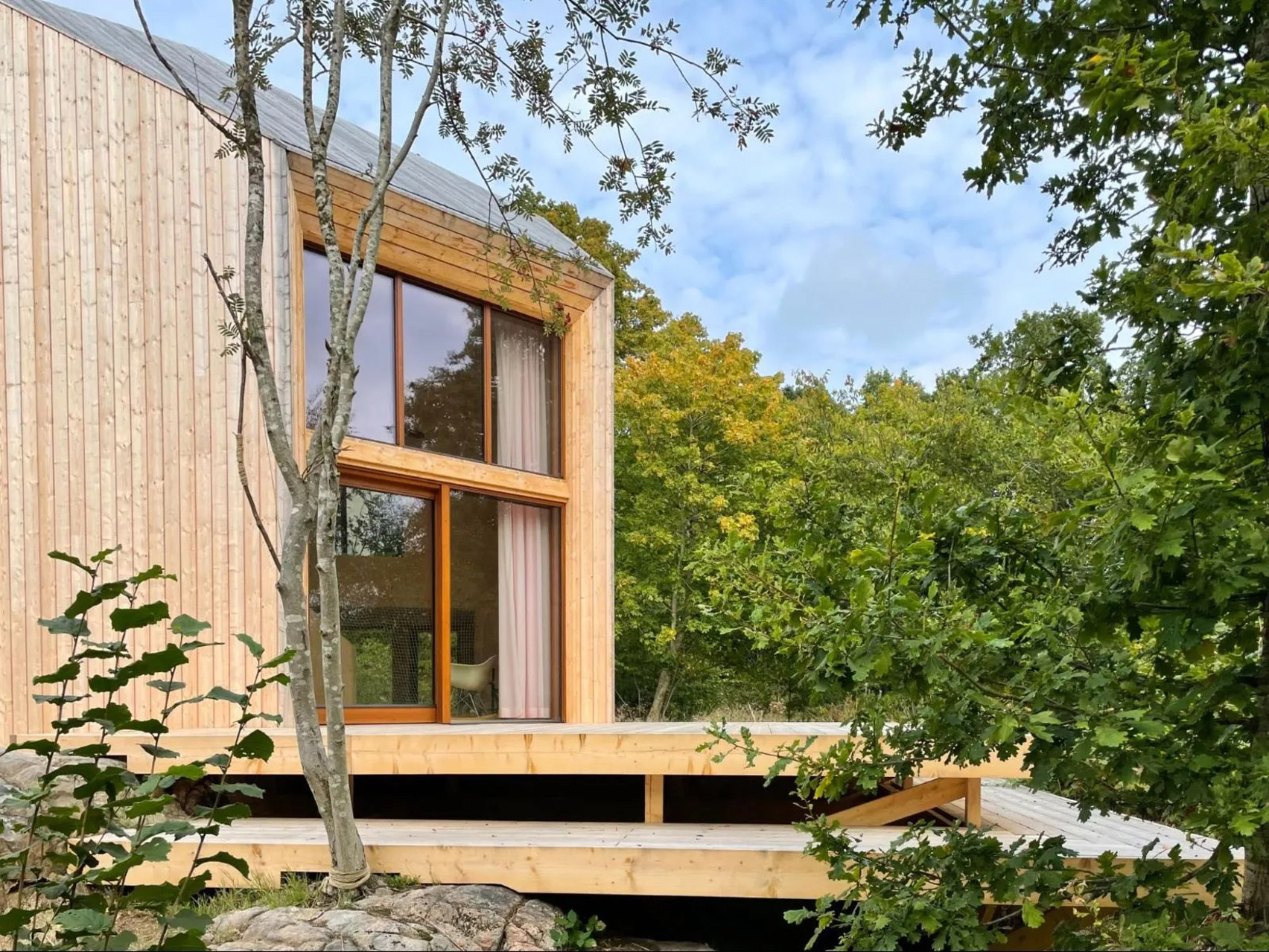
"WE CAN'T PRETEND THAT AESTHETICS ARE NOT IMPORTANT WHEN IT COMES TO SUSTAINABILITY"
Sustainability must be incorporated into architecture projects in a truly holistic way in order to support the green transition, writes Trimble SketchUp's Andrew Corney as part of Dezeen's Climate Salon partnership with the software company.
In the realm of architecture, aesthetics have long been intertwined with cultural norms, technological advancements and individual preferences. However, as society grapples with the urgent need to address climate change, industry experts are re-evaluating traditional approaches to building design and construction, making efforts to minimise environmental impact while creating visually appealing and functional spaces.
For the past 100 years, architects and designers have relied heavily on materials such as glass, concrete and steel. The appeal: a marriage between an enduring modern aesthetic and the practical benefits of low maintenance and industry know-how.
In contrast, environmentally conscious professionals have spent years exclusively crafting their relationship with bio-based materials like wood and fibre, or recycled feedstock ground into a range of construction products. There hasn't been that much synergy between the two approaches – aesthetics-led and sustainability-led – to building design, which are often considered in silo and as an "add-on" to a design project.
At every turn, all alternatives to concrete, steel and glass have had to compete with the three blockers of aesthetics, familiarity and durability. The key to real change and greener outcomes in the use of building materials is not to sell in terms of sustainability, but to make sure sustainable solutions address all three of these concerns at once.
Take glass, for instance. Glass is the fundamental material of modern architecture. Its appeal stems, in part, from its ability to allow for one of the essential conditions for life – sun and light. That said, it's perhaps ironic that the quality that makes glass so desirable is the very same causing harm to our environment.
Standard glass is a poor insulator and can lead quickly to heat gain or loss. This, in turn, leads to an over-reliance on air conditioning or heating systems, impacting energy efficiency. For this reason, there's an increasing concern regarding excessive glazing in modern cities. But people are so used to seeing perfectly shiny or glazed buildings that it is difficult for architects to go against the norm.
Ultimately, industry professionals need to confront the notion of what beauty means in architecture and, ideally, source materials locally. Not only is it better for the environment – since it reduces carbon emission from transportation – it also helps fuel the local economy.
Transitioning to a more sustainable aesthetic also requires a fundamental re-evaluation of building materials and construction practices, demonstrating how these choices will have a significant impact on our environment in the long term.
For instance, the notion of replacing steel with a lower environmental-impact but often beautiful option like timber is appealing. However, the current software infrastructure primarily supports steel and concrete designs, lacking flexibility for timber. The industry must adapt to facilitate biomaterial-based designs and make them as easy to adopt as those that are concrete or steel based.
Technology could play a fundamental role in facilitating a shift towards sustainable aesthetics. Integrating visualisation technology into design processes could enhance productivity and support informed decision-making regarding material selection and energy efficiency.
SketchUp's 3D-modelling software, for instance, allows for greater flexibility within a project. Having the ability to try out different options of insulation, glazing types and HVAC systems can help architects maximise the use of natural resources such as sunlight and wind, reducing the need for artificial lighting, heating, and cooling. The software allows professionals to assess a design's environmental impact and help reduce a building's energy consumption over its lifetime.
Adaptive reuse has also emerged as a key strategy for minimising environmental impact, emphasising the importance of repurposing existing structures rather than constructing new ones, and embracing the wear and tear of materials.
There can be beauty in imperfection but it needs to be imperfection, not defection. The issue is that professionals need systems that validate the durability of old materials.
New material providers face a double challenge – first, convincing designers that their materials are durable. Second, providing confidence that a fledgling business will pick up the pieces if something goes wrong.
Perhaps there are creative insurance, bond or other warranty mechanisms that could be used to make it easier for new innovative materials to be picked up with confidence. These mechanisms could also bring testing and better rigour to material design in the first place.
Incorporating sustainability into architecture projects requires a holistic approach that considers aesthetics, environmental impact, resource use, and long-term resilience. Ultimately, the success of the green transition in the industry hinges on collective action and systemic change.
In conclusion, we can't pretend that aesthetics are not important when it comes to sustainability. The convergence of the two in architecture requires rethinking conventional approaches and embracing new possibilities.
By prioritising environmental stewardship and fostering a culture of innovation, the architecture profession can play a pivotal role in shaping a more sustainable future for generations to come.
Andrew Corney is product director of the architecture and design division at SketchUp.
Partnership content
This article is part of Dezeen's Climate Salon partnership with SketchUp. Find out more about Dezeen partnership content here.
The post "We can't pretend that aesthetics are not important when it comes to sustainability" appeared first on Dezeen.
2024-07-18T14:48:22Z dg43tfdfdgfd